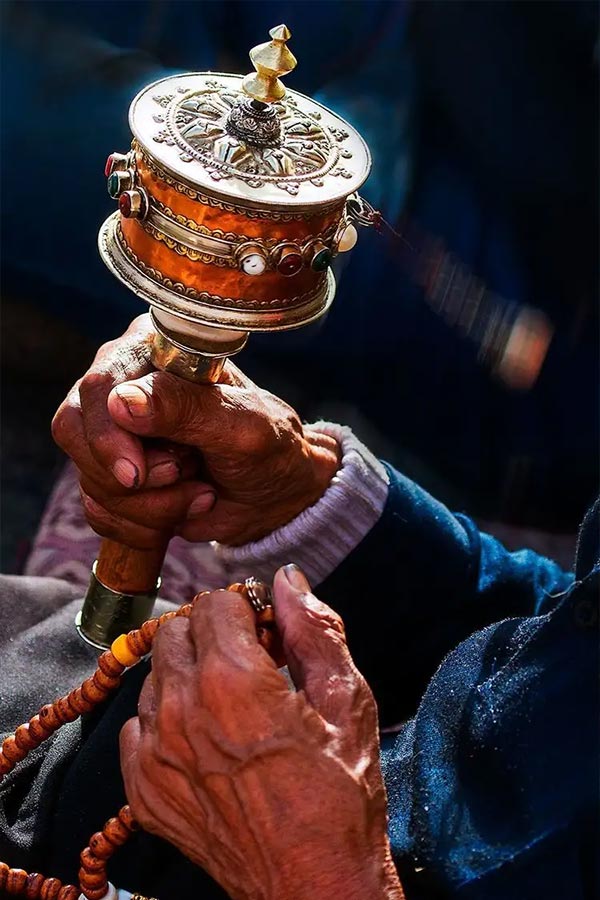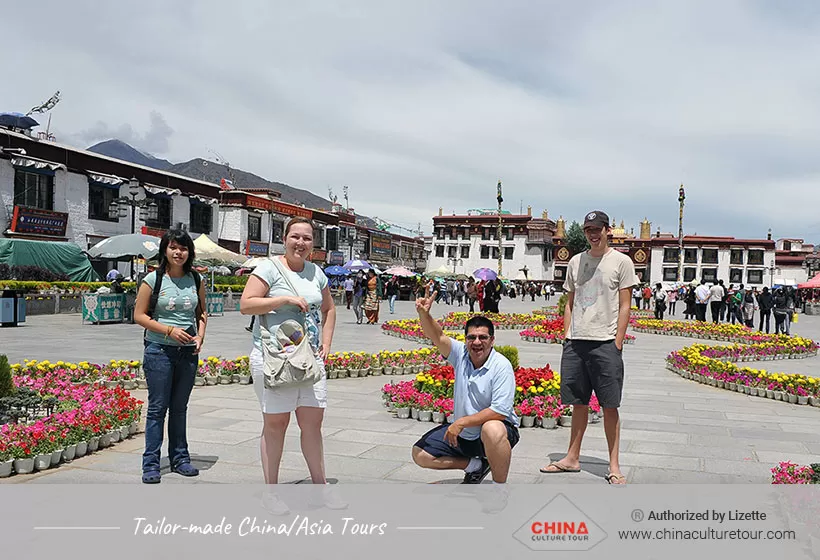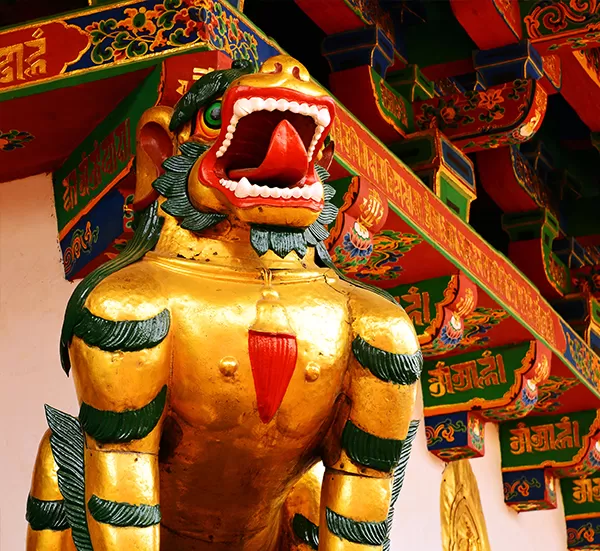Lhasa Travel Guide: Attractions, Itinerary, Hotels, Food, etc.
Overview
Lhasa, the capital of the Tibet Autonomous Region, is an international tourist city with a distinctive snow plateau and ethnic characteristics. As one of China's first national historical and cultural cities, Lhasa is renowned for its picturesque scenery, long history, unique customs, and strong religious atmosphere.
Situated in the southwest of China, Lhasa lies on the northern side of the Himalayas and in the middle reaches of the Lhasa River, a tributary of the Yarlung Tsangpo River. Lhasa is the political, economic, cultural, and educational center of Tibet, as well as a sacred site of Tibetan Buddhism. At an altitude of 3,650 meters, Lhasa enjoys mostly sunny weather throughout the year, with more than 3,000 hours of sunshine annually, earning it the nickname "City of Sunlight".
Culture of Lhasa
As the capital of the Tibet Autonomous Region, Lhasa boasts a long history and deep-rooted religious culture. Since the 7th century, when Songtsen Gampo established his regime here, Lhasa has been the birthplace of Tibetan Buddhism. The Potala Palace, Jokhang Temple, and Barkhor Street are renowned religious and cultural landmarks, attracting thousands of pilgrims each year.
Lhasa's folk culture is vibrant and diverse, including practices such as offering Khata and making Tibetan incense. Offering a Khata, a traditional Tibetan scarf, is a daily ritual among the Tibetan people, symbolizing purity and good fortune. Making Tibetan incense is a traditional custom used to pray for peace and health.
Lhasa is also home to a wealth of intangible cultural heritage, such as Nimu Tibetan incense, Pusong carving, and Xuela Tibetan paper, collectively known as the "Three Treasures of Nimu". Additionally, Thangka painting and Lhasa folk songs further reflect the city's deep cultural heritage.
Weather, the Best Time to Visit Lhasa
The best time to visit Lhasa is from May to October. During this period, the weather is pleasant with moderate temperatures. The days are sunny and bright, while the evenings are cool, making it ideal for outdoor activities and sightseeing. Additionally, the higher oxygen levels during this time help reduce the effects of altitude sickness.
Spring (March to May): During spring, temperatures gradually warm up, and the days are warm and sunny, coinciding with the Tibetan New Year (Losar).
Summer (June to August): Summer in Lhasa is warm and humid. Although it is the rainy season, the rains typically occur at night. This time of year presents the most beautiful natural scenery in Lhasa, with lush greenery that contrasts sharply with the starkness of winter.
Autumn (September to November): Autumn features comfortable temperatures, clear blue skies, and bright sunshine, as a traditional pilgrimage time in Tibet.
Winter (December to February): Winter in Lhasa has its own charm, especially with the backdrop of snow-capped mountains. You can enjoy the beauty of the ice and snow-covered landscapes during this time.
Must-visit Attractions
Potala Palace, characterized by its Tibetan style, combines palace, fortress, and temple elements. It is the highest, largest, and best-preserved palatial complex in the world, known as the "Jewel on the Roof of the World".
Jokhang Temple is the center of the Gelug school of Tibetan Buddhism and is the most splendid and important Tibetan Buddhist temple in Tibet, often referred to as the "First Temple of Tibet".
Barkhor Street is a famous circumambulation route and commercial center in Lhasa, preserving traditional architecture and lifestyle, known as the "Holy Road" by Tibetans.
Namtso Lake is one of the three holy lakes in Tibet and a famous sacred site in Tibetan Buddhism, meaning "Heavenly Lake".
Activities
Tibetan New Year (Losar)
The first month of the Tibetan lunar calendar is the most festive and significant to wish for favorable weather, prosperity for bountiful harvest in the coming year. Early in the morning, people dress in new clothes, worship deities, and exchange New Year greetings. Monasteries hold grand prayer sessions, and devotees from various regions come to light lamps, make offerings, and distribute alms.
Glingka Festival
On the fifteenth day of the fifth lunar month, this festival, which referred as "World Incense Day", commemorates the subjugation of evil spirits. Tibetan people dress in their finest attire and bring an array of delicious foods to the lush forests. They set up tents, enjoy feasting, drinking, singing, and dancing, reveling in the beauty of nature.
Horse Racing Festival
Held in the sixth lunar month, this is a grand traditional festival on the northern Tibetan grasslands, also known as the "Grassland Festival". During the festival, nomads from northern Tibet, dressed in their best clothes and riding fine horses, gather from all directions to the racecourse. In addition to horse racing and archery, there are also tug-of-war, wrestling, and cultural performances.
Sho Dun Festival
Starting on the first day of the seventh lunar month, this festival originally celebrated yogurt feasts, and now has evolved to include watching Tibetan opera, public park outings, yak racing, and equestrian performances.
Ongkor Festival
Celebrated in the eighth lunar month, this festival is for praying for a bountiful harvest. People in Tibetan areas gather in the fields to pray for the blessings of Buddhas and Bodhisattvas to ensure a successful harvest.
Bathing Festival
Held in the seventh lunar month and lasting for seven days, Tibetans believe that bathing in the river during this time can cure all diseases, ensuring good health and happiness throughout the year.
Best Places to Visit
Chengguan District is the political, economic, and cultural center of Lhasa and the most developed area of Tibetan religious culture. It serves as an important window for domestic and international travelers to learn about Tibet, featuring famous historical sites such as the Potala Palace, Jokhang Temple, Ramoche Temple, Norbulingka, and Lukhang Park.
Damxung County, known as the northern gateway of Lhasa, translates to "selected pasture" in Tibetan and is famous for its lush pastures and healthy livestock on the Qangtang Grassland. The county's natural scenery is also spectacular, including renowned attractions such as Nyenchen Tanglha Mountain, Namtso Lake, and Tashi Peninsula.
Dagzê District, referred to as the eastern gateway of Lhasa, is known for its beautiful mountains, water, and pastoral landscapes, offering high tourism value. There are 15 temples within Dagzê District, with Ganden Monastery being the most famous among them.
Local Food and Snacks
As the capital of Tibet, Lhasa is a city rich in cultural heritage and culinary delights. Besides the well-known Tibetan staples like butter tea and tsampa, Lhasa offers a variety of unique and delicious foods:
Lhasa Sweet Tea: This Tibetan sweet tea is a popular beverage with a taste that appeals to many. Made from black tea, milk powder, and white sugar, it is sweet, delicious, and nutritious, and is deeply loved by locals and visitors alike.
Yak Hot Pot: This Tibetan hot pot features yak meat as the main ingredient. The yaks, living in the pristine highlands, provide tender and delicate meat. When cooked in the hot pot, the meat becomes flavorful without any gamey taste.
Boiled Mutton: This traditional dish involves boiling mutton with spices, preserving the natural, fresh flavor of the meat. It is especially tasty, with a fragrant aroma and no strong mutton odor.
Fried Potato Baozi: Made with mashed potatoes stuffed with minced beef, then deep-fried, they have a soft and crispy texture and can be enjoyed with various sauces for a unique taste experience.
Lhasa Liangfen: This popular street food is made from starch and served with a specially made spicy sauce, which has a refreshing and spicy flavor.
Best Things to Do in Lhasa
Lhasa, the heart of Tibet and the "roof of the world", is often hailed as the most religious city and consistently ranks high on lists of must-visit destinations. The name Lhasa alone draws travelers in, but how can one make the most of a trip to this enchanting city?
Visit the Potala Palace, experience the pearl on the roof of the world. Along the way, explore the Norbulingka or Dzongyab Lukhang to immerse yourself in the grandeur and timeless beauty of classical Tibetan gardens.
Walk the Kora in Barkhor Street, feel the local customs and culture as you walk the sacred pilgrimage path around Jokhang Temple, partaking in the spiritual journey of a devout pilgrim.
Explore Tashi Dor Peninsula and Namtso Lake, witness the breathtaking natural beauty of one of Tibet's three sacred lakes.
Luxury Hotel in Lhasa
Shangri-La Lhasa stands proudly in the city center, offering a 200-degree panoramic view of Lhasa. This Tibetan-style hotel features a range of modern rooms, blending traditional architecture with contemporary comforts.
Songtsam Lhasa Linka Hotel boasts expansive views, including the majestic sight of the Potala Palace. Wandering through the hotel feels like stepping back in time to the ancient Barkhor Street.
InterContinental Lhasa Paradise offers a wealth of facilities, convenient services and traffic, ensuring a comfortable and luxurious stay.
How to Plan a Itinerary in Lhasa
Day 1: Visit Potala Palace, Jokhang Temple, and Barkhor Street.
Day 2: Explore the Drepung Monastery and Sera Monastery.
Day 3: Take a day trip to the Ganden Monastery, and hike to the Yamdrok Lake.
Day 4: Visit the Norbulingka Palace and the Tibet Museum.
Customize Your Unique Lhasa Tibet Tour

If you are interested in one of the Lhasa itineraries mentioned above, please contact us, and we will be happy to customize it and provide a quote tailored to your preferences.
Alternatively, if you would like to customize your Lhasa Tour, please visit our Lhasa Tour Customized Center. We assure you that you will receive a reply within 24 working hours.
Informative Articles for Your Lhasa Trip
 Prayer wheel, Lhasa
Prayer wheel, Lhasa- Travel Guide: attractions, seasons, hotels, food, itineraries, etc.
- Travel itineraries: best itineraries for your reference
- Weather: the best time and seasons to visit Lhasa
- Top attractions: things to do in Lhasa
- Cultural immersions: hands-on activities to spotlight your trip
- Unique perspective: top different things to do
- Local food: what to eat while traveling in Lhasa
- Luxury hotels: where to stay in Lhasa
- Lhasa Tours: tailor-made Lhasa Tours for your reference
GREAT FAMILY CHINA TOUR
JULY 2024 We wanted to thank Grace at China Culture tour for organizing a great tour of China. We enjoyed our Beijing - Xian-Chengdu -Guilin -Yangshuo - Shanghai trip. Our local guides Bruce in Beijing, Susan in Xian, Jane in Chengdu, Mike in Guilin and Mary in Shanghai took care of us…read more details »
Teng Han L from SINGAPORE
Ready to Create a Unique Dream Travel?


